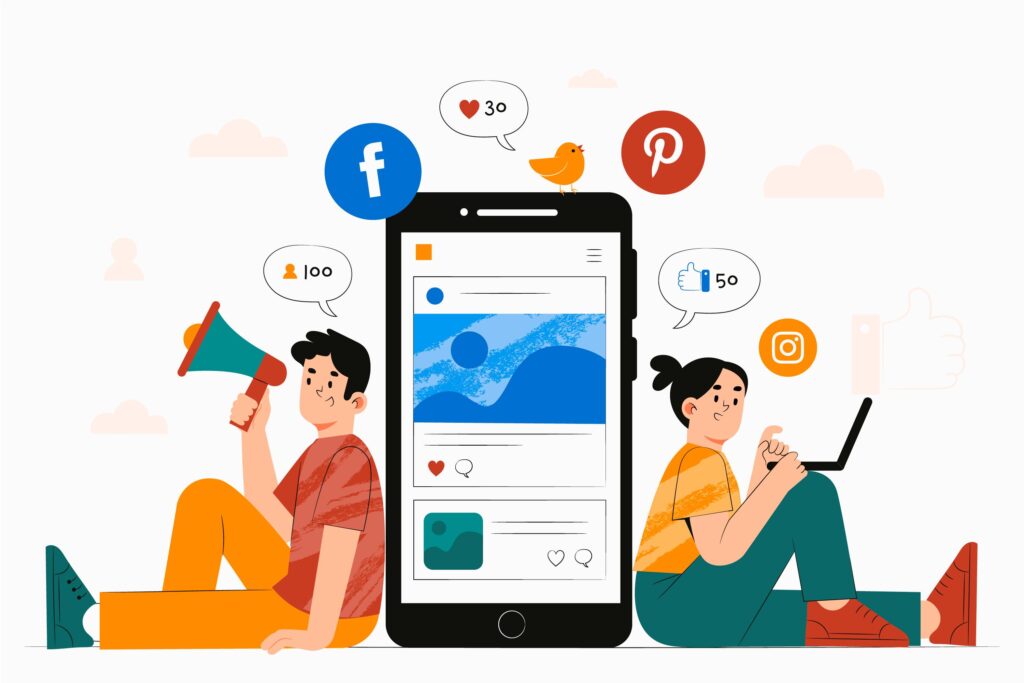Inbound vs. Outbound: Which Works Best for B2B Marketing?
In the world of B2B marketing, businesses often face a critical decision: Should they focus on inbound marketing, outbound marketing, or a mix of both? Each strategy offers unique advantages and plays a distinct role in attracting and converting leads. Understanding their differences—and when to use each—can transform the way your business generates opportunities and scales revenue.

What is Inbound Marketing?
Inbound marketing is a pull strategy focused on attracting potential customers through valuable content, search engine optimization (SEO), and engagement-driven platforms like blogs, social media, and email newsletters.
Core Components of Inbound:
- Content Marketing (blogs, whitepapers, videos)
- SEO
- Social Media Engagement
- Lead Nurturing via Email Automation
- Webinars and Educational Resources
Key Benefits:
- Builds trust through value-driven content
- Generates qualified leads over time
- Lower cost-per-lead in the long run
- Positions your business as a thought leader
What is Outbound Marketing?
Outbound marketing is a push strategy where businesses actively reach out to potential leads through channels like cold calling, paid ads, email outreach, and direct mail. It’s more immediate and direct, often used to generate quick traction or brand visibility.
Core Components of Outbound:
- Cold Emails and Cold Calling
- Paid Ads (Google Ads, LinkedIn Ads)
- Trade Shows and Events
- Direct Mail Campaigns
- Telemarketing
Key Benefits:
- Faster results with direct targeting
- Scales outreach to specific decision-makers
- Useful for breaking into new markets
- Controlled message delivery and timing
Inbound vs. Outbound: Key Differences at a Glance
| Feature | Inbound Marketing | Outbound Marketing |
|---|---|---|
| Approach | Value-driven, permission-based | Interruption-based, direct outreach |
| Cost | Lower over time | Higher initial investment |
| Speed of Results | Slower build-up, compounding effect | Fast lead generation |
| Lead Quality | Typically more qualified | May vary depending on targeting |
| Scalability | Grows with content and SEO efforts | Scales with budget and sales manpower |
| Best Use Case | Nurturing and long-term brand growth | Quick market penetration or outreach |
Which One Works Best for B2B?
The best strategy often depends on your goals, target audience, budget, and sales cycle.
Inbound Works Best When:
- You aim to educate your market or solve complex pain points.
- Your sales cycle is long, requiring consistent engagement.
- You want to build long-term brand authority and lead pipelines.
- Your product/service is search-driven or content-driven.
Outbound Works Best When:
- You need quick wins or fast market entry.
- Your product has clear value propositions and defined buyers.
- You are targeting specific industries or job titles.
- You have dedicated sales teams and the ability to personalize outreach.
The Smartest B2B Agencies Use Both
The most effective B2B marketing strategies integrate both inbound and outbound. Outbound can open doors and create awareness, while inbound nurtures and educates leads until they’re ready to buy.
Hybrid Strategy Example:
- Use outbound campaigns to target C-level decision-makers.
- Follow up with inbound content like case studies, blogs, and webinars.
- Nurture leads through drip email campaigns and remarketing ads.
Final Thoughts
Inbound and outbound marketing aren’t rivals—they’re partners. For B2B brands aiming for sustainable growth, combining both creates a robust funnel that attracts, engages, and converts across multiple touchpoints.
Whether you’re building long-term trust or looking for short-term gains, the key is knowing when—and how—to use each strategy effectively.
Need a custom B2B strategy that combines inbound and outbound for maximum ROI?
Let’s talk about how we can help your business grow faster and smarter.


